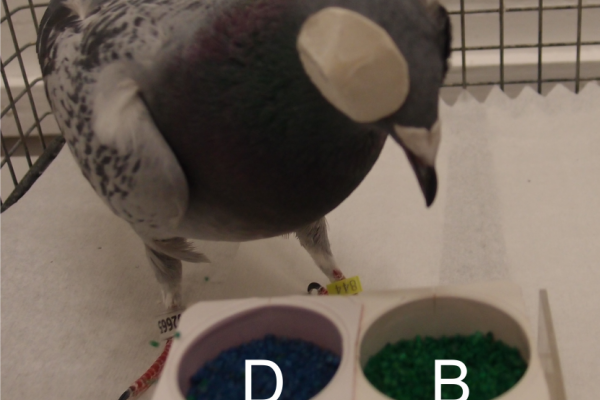2017-04-22

The two hemispheres of the vertebrate brain are characterized by several left-right differences in the analysis and evaluation of information. Such lateralized processing requires intra- and interhemispheric mechanisms mediating exchange, integration, or suppression of information but the underlying functional organization is only basically understood. Researchers from the Biopsychology lab of Bochum therefore explored intrahemispheric integration capacities in pigeons during relational learning. Pigeons were trained in a way that each hemisphere learned only half the information that represented a transitive line (A>B>C>D>E). Subsequently, the hemispheres were tested independently from each other with stimulus pairs that required accessing information from the other brain side. The hemispheres differ in encoding interhemispheric information but both hemispheres were impaired in correct responding when the information was in conflict with directly learnt memory. In sum, the study indicates that interhemispheric communication in pigeons is an active process that integrates intra- and interhemispheric information in a context-dependent and hemispheric-specific manner. Efficient interhemispheric cooperation requires simultaneous activation of both brain sides.

The two hemispheres of the vertebrate brain are characterized by several left-right differences in the analysis and evaluation of information. Such lateralized processing requires intra- and interhemispheric mechanisms mediating exchange, integration, or suppression of information but the underlying functional organization is only basically understood. Researchers from the Biopsychology lab of Bochum therefore explored intrahemispheric integration capacities in pigeons during relational learning. Pigeons were trained in a way that each hemisphere learned only half the information that represented a transitive line (A>B>C>D>E). Subsequently, the hemispheres were tested independently from each other with stimulus pairs that required accessing information from the other brain side. The hemispheres differ in encoding interhemispheric information but both hemispheres were impaired in correct responding when the information was in conflict with directly learnt memory. In sum, the study indicates that interhemispheric communication in pigeons is an active process that integrates intra- and interhemispheric information in a context-dependent and hemispheric-specific manner. Efficient interhemispheric cooperation requires simultaneous activation of both brain sides.